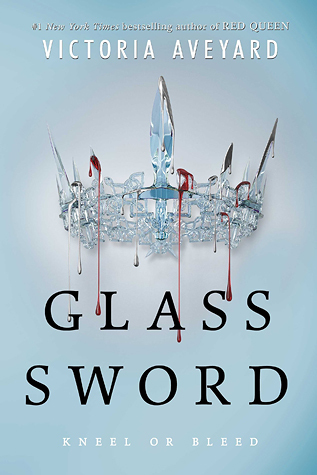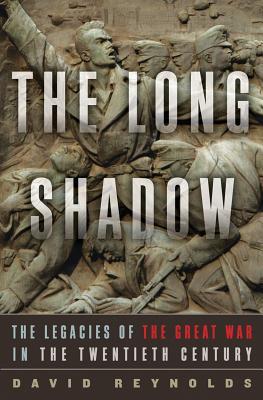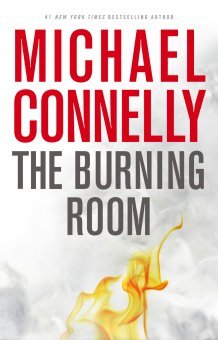Practically ripped from recent headlines about police
brutality and misconduct, Andrew Case’s debut novel THE BIG FEAR plugs directly into the
live wire of current events, taking readers deep inside the world of the men
and women who “police the police,” through a heart-pounding story of suspense,
police corruption, profiteering and betrayal in the city that never sleeps.
Perhaps one of the most truly authentic NYC-set crime
suspense novels ever written, THE BIG FEAR has an unmatched caliber of insider
detail drawn from Case’s long and distinguished career as an investigator,
spokesman, and policy director at the city’s Civilian Complaint Review
Board—the influential civilian committee that oversees NYPD misconduct claims.
Case’s first hand knowledge of the goings-on in police stations, courtrooms, and
lower Manhattan’s corridors of municipal power makes for a truly riveting
reading experience.
At age fifty-three, Detective Ralph Mulino has certainly
put in his time as a New York City policeman. He’s a good cop, but when he
looks at how much the city has changed since he first walked the beat as a raw
rookie, he feels increasingly out of place. New Yorkers aren’t fearing the
“little” things like muggings, car thefts, and petty robberies the way they
did—with very good reason—in the 1980s. To an outside observer, New York is
safe now. But somehow the “big” fears are stronger than ever… Fears of
buildings falling down. Fears of poison gas filling elevators and subway cars.
Fears of bridges—full of cars, cyclists, and pedestrians—collapsing into the
East River.
And policing has changed too. In Mulino’s day, it was
about busting real criminals and getting them off the streets so the people in
your precinct (whose names you knew) would be more secure. Now it’s all about
meeting the statistical quotas handed down by some faceless bureaucrat—and as
far as the statistics are concerned, a stop is a stop whether the guy is
carrying a gun, a joint, or a bag of groceries.
But Mulino is still determined to do his job and do it
well. It’s all he knows to do. So when a call rouses him out of bed at 2 A.M.
one August night during a sweltering, tense summer, he doesn’t hesitate (even
though it’s supposed to be his day off, which seems odd for a moment…). But
what seemed to be a routine check of a docked cargo ship soon goes violently
awry, and when the chaos settles Mulino sees one of his gunshots has killed
another officer… who appeared to be an armed and threatening criminal.
A dead policeman is a big deal, and everyone from
newspaper readers to City Hall big shots want answers... and perhaps a quick
official conclusion that Mulino was a dirty cop who whacked an inconvenient
colleague. It falls to Leonard Mitchell, the new head of the Department to
Investigate Misconduct and Corruption (DIMAC) to figure it out. With all eyes on
him, Mitchell knows his job likely depends on this case.
Sitting across the interview table from Mulino, Mitchell
doesn’t see a careless shooter, and certainly not a cop killer. And there are
just too many bizarre questions: Why was an off-duty Mulino called to the scene
of the crime? What was the dead officer really doing there? What happened to
the gun Mulino saw—was it really there and if so, who took it? And what was on
the cargo ship and who did it belong to?
The surprisingly difficult search for answers quickly has
Mitchell thinking that there is much more going on than a tabloid-friendly
story of a disgruntled, corrupt detective. And when sabotage and more dead
bodies start to surround the investigation, Mulino and Mitchell enter an uneasy
partnership in a dangerous bid to save not only their careers and perhaps
lives, but also the integrity of the city both are sworn to serve.
Q&A WITH ANDREW CASE
Q: Was the plot of THE BIG FEAR informed by any specific
cases you oversaw while serving at the Civilian Complaint Review Board?
A: While the overarching plot isn't based on any one
case, many of the details and incidents of the book are informed by CCRB cases.
The first draft of the original shooting was very much based on the case of
Ousmane Zongo, who was shot by police officer Bryan Conroy after a chase in a
dark storage unit in 2003. Eventually the storage unit became a container ship,
and Zongo became another police officer. The case in Mulino's backstory, in
which a man dies after being pepper sprayed, is based on a very similar case
that I investigated in 1997. I also used to do outreach and press for the CCRB,
and much of the interplay between Leonard and Tony Licata has its roots in my
work with the tabloid reporters who covered the NYPD.
Q: You’ve written plays in the past but this is your
first novel. How did you find the fiction-writing process to be different from
writing a dramatic script in terms of character, plot, pacing, etc.?
A: Plays are all dialogue, and the audience watches from
the outside. That means that everything about a character has to come through
in how she speaks. The plot has to be played out in speech. Writing a book
gives you so many more options--you can describe the world, you can go into
someone's mind--but it also means you have many more choices to make. In a
book, you can't write a weak line and hope the actor will save you. What was
most new to me in writing the book was the chance to write from a point of
view: seeing the world from inside the character is something that theatre
doesn't easily allow. At the same time, I'm so glad I had the experience I had
writing for theatre, because you are trained to write crisply, and to always
write in a voice. Not only does being a playwright mean I focused on strong
dialogue, it also means that even the narrative scenes are written in a voice.
There is never a dull neutral narrator simply walking you through the action.
Q: Leonard Mitchell’s job seems to be similar to yours at
the CCRB. Is the character of Leonard based on you to any extent? What about
the characters of Ralph Mulino and Christine Davenport?
A: There are models for all the characters, but as I went
through many drafts of the novel they all moved away from who they were based
on and became themselves. Originally, Leonard was very much like me: he had my
background, he had my family life, he had my job. But the more I worked on the
book, the more he grew to serve the novel, rather than my image of myself. His
ambition to be seen by the mayor's side after breaking a big case is something
that some people at the agency had, but it wasn't my focus. I did outreach to
tenants at the Ebbets Field apartments, but I never lived there. At the same
time, some of my personal history started creeping into other characters:
Christine Davenport's family life is more like mine than it is like the woman
who ran the CCRB when I was there. And while there are a few cops whose
character traits found their way into Mulino, he probably changed the most over
the course of the revisions, and in many ways I have become more fond of him,
and identify more with him, than anyone else.
Q: Many who read this book are likely also going to be
very interested in the many real-life instances of police misconduct occurring
today, and the ways those cases are handled. What, if anything, do you hope
your readers learn about how this process really works from THE BIG FEAR?
A: Investigating police misconduct was the most
challenging, most rewarding, and most exciting job I ever had—on most days more
than writing novels. I'm really heartened that the issues I devoted much of my
career to are talked about so much more than they were ten years ago.
When I spoke to the community council after Timothy
Stansbury was shot, there was not nearly the interest that there is now in the
many cases that have been in the news. But one thing that I think people who
have started following the issue of police misconduct over the past two years
may miss is that the people who have been in the field for a long time are
working their hardest on very challenging cases. There seems to be a meme
nowadays that the people who investigate the police are compromised or
challenged or biased. I never saw that. Flo Finkle, who prosecuted the
"dirty thirty" cops in Harlem and ran the CCRB when I worked there,
is incredibly driven and devoted to justice. Phil Eure, who ran the DC oversigh
agency and is now the NYPD's inspector general, Kelvyn Anderson, who runs the
equivalent in Philadelphia, or Richard Rosenthal, who investigated the police
in Denver and Portland, are tough people doing a tough job. The reason these
investigations don't always turn out the way people want is that they are
usually incredibly complicated, very dense, and filled with competing
narratives. So I hope that people come away, in some part, with a respect for
the hard work done by the people who investigated police conduct.
Q: The massive changes in New York City over the past
thirty years are an important part of your novel. Do you think that, on the
whole, the city is better or worse off now than it was when Ralph Mulino was
starting to work the beat? Do you foresee the trends towards less crime and
higher costs of living continuing?
A: In 1995, I worked at a theatre on 42nd Street between
Ninth and Tenth Avenues. Every day I would walk past the porn theatres on my
way in to work. That was also the year that Times Square underwent its sudden,
wrenching, change. During the two months or so that the porn houses were shut
down but before they had been rehabbed to house Disney productions, the
marquees all sported poems. Weird, three-line odes and haikus. I saw Fiona Shaw
perform The Waste Land, directed by Deborah Warner, in one of those theatres
before renovation. It was the purest marriage of setting and content I have
ever seen on stage.
So in many ways, I miss the old New York. I am just
barely old enough to remember it. I feel bad for people who didn't have the
chance to see it, to walk through a city that had truly wild places, rather
than places that merely performed wildness. But I also recognize the importance
of safety: I have two kids, and where I live in Brooklyn was not a great place
to raise two kids in 1995. So I'm torn, because I love both New Yorks, in their
way. I love the mess and the carnival that we used to have, and I love being
able to get on a subway with my six-year old and not have to worry for a moment
about her safety.
As for crime and the cost of living, I think that we have
been sold a false narrative that the two are related. Safety doesn't have to be
expensive. It's great that crime is down, but the fact that it costs so much to
live in the city is crime of a different sort. The reasons that real estate
costs have spiraled out of control are a story for another time.
Q: What are your plans for your next book? Will we see
Ralph Mulino and/or Leonard Mitchell again or are you working on something
completely different?
A: I am deep into a sequel, in which we will see
both Mulino and Leonard again, and not only them. And it's funny you should
bring it up just after talking about real estate, because the new book is an
exploration of the dark side of development, with Leonard and Mulino teamed up
to investigate what looks at first like a construction accident, but turns out
to be so much more.
 In this well-written and wonderfully conceived follow-up,
Mare Barrow is still unable to come to terms with the treachery that infiltrated
her ranks, and she almost paid for it with her life. However, she realized that
she must quickly come to grip with the unexpected situation and carry out an
almost impossible mission – to save her friends before they are found and
destroyed by the King. Mare is also bent on taking revenge for the harsh
betrayal she suffered. But it is easier said than done. As the Silver king
unleashed his wrath on the Reds, Mare knows that she must act quickly, and act
decisively. Only if the Scarlet Guard were on her side, she would stand a
chance of winning…
In this well-written and wonderfully conceived follow-up,
Mare Barrow is still unable to come to terms with the treachery that infiltrated
her ranks, and she almost paid for it with her life. However, she realized that
she must quickly come to grip with the unexpected situation and carry out an
almost impossible mission – to save her friends before they are found and
destroyed by the King. Mare is also bent on taking revenge for the harsh
betrayal she suffered. But it is easier said than done. As the Silver king
unleashed his wrath on the Reds, Mare knows that she must act quickly, and act
decisively. Only if the Scarlet Guard were on her side, she would stand a
chance of winning…


